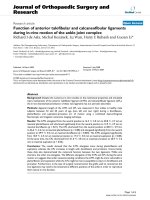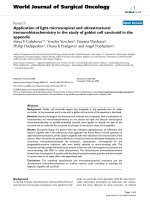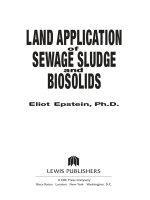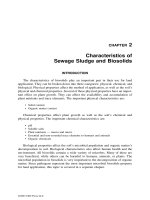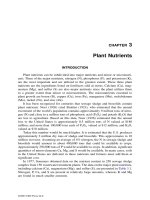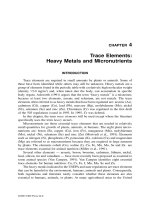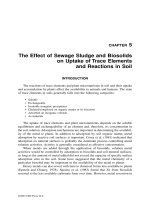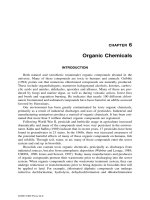Application of XRay CT to Investigate Effect of Rock Heterogeneity and Injection Rates During CO2 Flood Process
Bạn đang xem bản rút gọn của tài liệu. Xem và tải ngay bản đầy đủ của tài liệu tại đây (3.22 MB, 46 trang )
Application of X-Ray CT to
Investigate Effect of Rock
Heterogeneity and Injection
Rates During CO2 Flood
Process
Deepak Chakravarthy
Master’s Division
Texas A&M University
Feb, 2004
Topics of Discussion
Introduction
Problem Outline
Objective
Experiment Outline
Results
Conclusions
Texas A&M University
Feb, 2004
Topics of Discussion
Introduction
Problem Outline
Objective
Experiment Outline
Results
Conclusions
Texas A&M University
Feb, 2004
Introduction
Enhanced Oil Recovery
CO2 flooding – One of the most widely used!
Why ?
Texas A&M University
Feb, 2004
Introduction
Broad Applicability
Lithology -- Works well in:
Sandstone (55% of current floods)
Carbonates (35% of current floods)
Others (about 10%)
Secondary or Tertiary
Oil saturation from <20% to 85% at start of
flood
Average S for current flood is 55%
o
Water cuts as high as 98% at start
Texas A&M University
Feb, 2004
Introduction
Mechanisms
Miscible flood
Extraction of light to intermediate hydrocarbons
Oil swelling
Viscosity reduction
Texas A&M University
Feb, 2004
Introduction
Miscible flood
Extraction of light to intermediate
Problems
?
hydrocarbons
Oil swelling
Viscosity reduction
Texas A&M University
Feb, 2004
Problem Outline
Limiting Factors
Reservoir heterogeneity
Low viscosity and high mobility
Natural fractures
Texas A&M University
Feb, 2004
Objective
Investigate mechanisms of oil bypass during CO2
flooding
X-Ray CT Scanner
Texas A&M University
Feb, 2004
Topics of Discussion
Introduction
Problem Outline
Objective
Experiment Outline
Results
Conclusions
Texas A&M University
Feb, 2004
Experiment Outline
X-Ray Tomography
Workstation
3D CT Image
X-Ray Source
Digital Detector
Texas A&M University
Object
Feb, 2004
Experiment Outline
X-Ray CT Basics
CT number
Depends on density
Every material has a characteristic CT number
E.g. CT for air = -1000
Texas A&M University
Feb, 2004
CT Scanner
Texas A&M University
Feb, 2004
Experiment Outline
Procedure
Prepare Core
Experiment
Scan Dry Core
Saturate in
Vacuum Chamber
CO2 Saturated
Core Scans
Dope Oil
Texas A&M University
Feb, 2004
Experiment Outline
Texas A&M University
Feb, 2004
Experiment Outline
Experiment Summary
Displaced Fluid - SoltrolTM Refined Oil
Displacing Fluid - CO2
Pressure - 800 psig
Temperature - 75° F
CO2 phase - Vapor
Texas A&M University
Feb, 2004
Experiment Outline
Experiment Summary
Highest Injection Rate - 0.09 cc/min
Texas A&M University
Feb, 2004
Experiment Outline
Experiment Summary
Highest Injection Rate - 0.09 cc/min
Lowest Injection Rate - 0.03 cc/min
Texas A&M University
Feb, 2004
Experiment Outline
Experiment Summary
Highest Injection Rate - 0.09 cc/min
Lowest Injection Rate - 0.03 cc/min
Lowest rate with heterogeneous (fractured) core
- 0.03 cc/min
Texas A&M University
Feb, 2004
Topics of Discussion
Introduction
Problem Outline
Objective
Experiment Outline
Results
Conclusions
Texas A&M University
Feb, 2004
Results
Dry core scans with bright blue regions
indicating higher CT numbers - i.e. higher
density
Results
Oil saturated core scans with red color
indicating higher CT numbers
Results
CO2 Injection at 15 minutes shows CO2 as a
blue spot at the center
Results
CT Scans at 25 minutes after start of
injection
Results
CT Scans at 35 minutes after start of
injection


